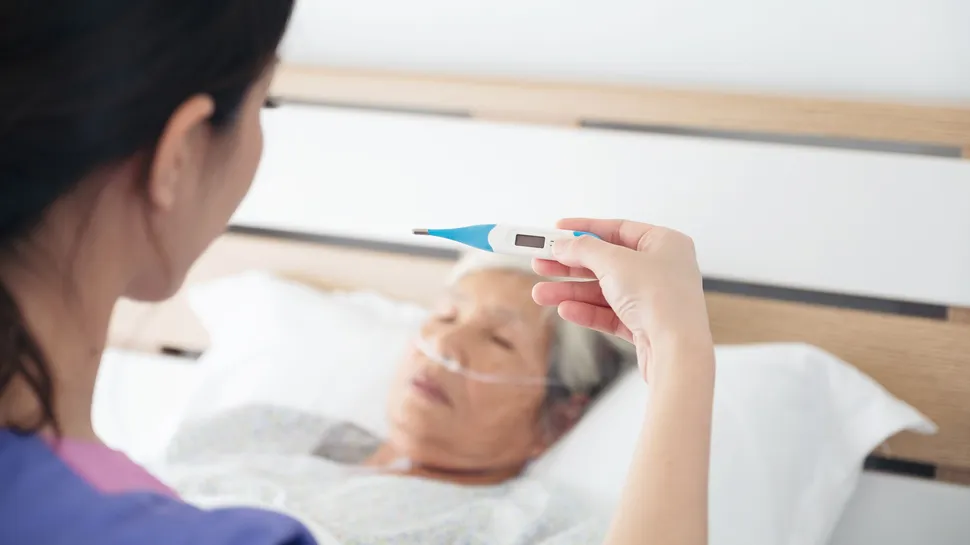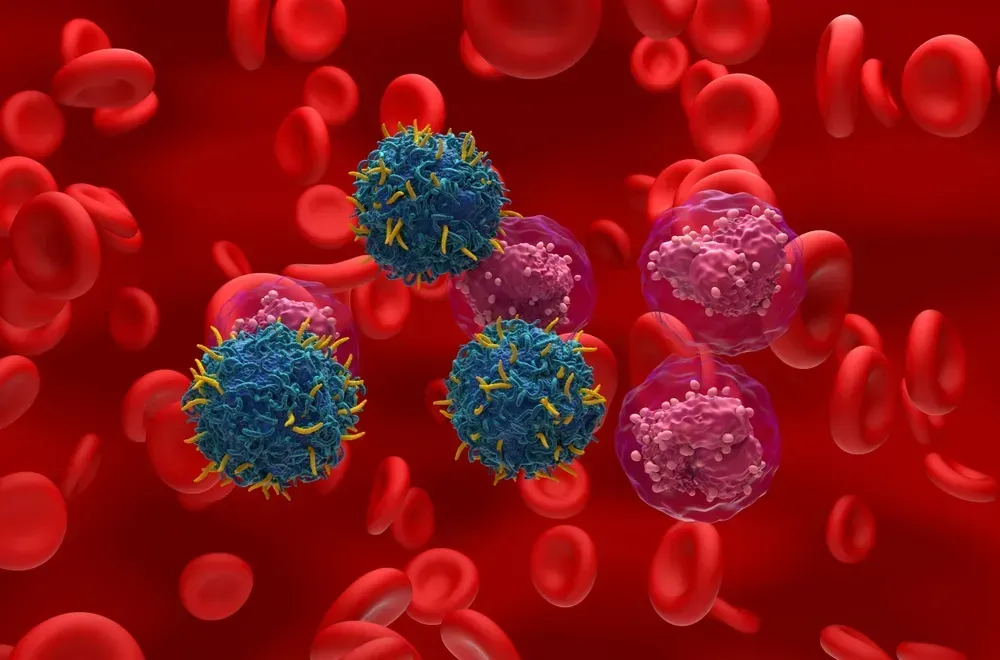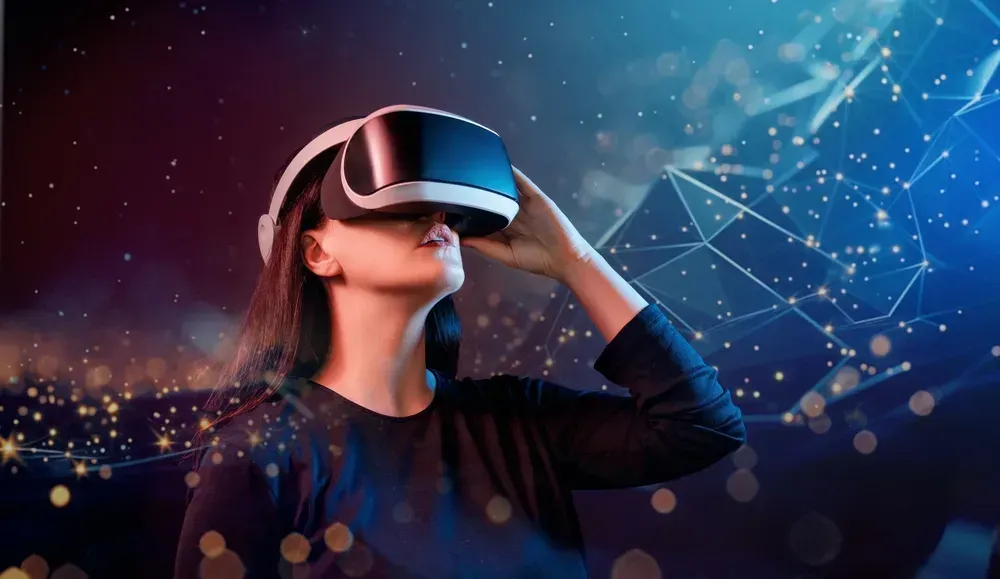Wearable Tech for Early Detection of CRS

CRS (cytokine release syndrome) is a common side effect of myeloma immunotherapies such as CAR-T and bispecific antibody therapies.
Precautions such as step-up dosing for bispecific antibody therapy and hospitalization for CAR-T therapy are in place so that medical teams can monitor for this side effect, which commonly presents as fever, nausea, headache or muscle pain in the lower grades and organ dysfunction, low blood pressure, and low oxygen levels at a more serious grade.
Sridevi Rajeeve, MD, shared very exciting news at the 20th annual IMS Conference regarding CRS management and how technology can be used to perhaps more effectively monitor for CRS and help treatments like CAR-T and bispecific antibody therapy to move to outpatient settings.
Why Is This Technology Needed?
The team at Mount Sinai in charge of conducting this study set a goal to see if they could take a subset of patients who were receiving bispecific therapy or CAR-T therapy completely out of the hospital setting and make the treatment a complete outpatient procedure.
Out-of-the-hospital treatments create less of a burden on the myeloma patient and their families. They also allow the treatments to be accessed in more rural parts of the world, increase the number of patients that have access to them, and the number of slots given to an academic hospital/center for those that truly need to be in-patient. Receiving therapy outside of the hospital also reduces the risk of initial infection.
The research team set out to answer the following questions:
- Was the technology/monitor reliable in capturing CRS symptoms and patient data?
- Was this technology feasible enough to patients to have/wear?
Results of the CRS Study
Twenty-four patients receiving CAR-T at Mount Sinai were approached about participating in this study. Out of the 24 patients, 22 of them were interested. The researchers were encouraged by this high enrollment percentage (91.6%) and were hopeful that this interest is reflected in the great myeloma population.
Out of those 22 patients, all of the patients were able to wear their devices for the entire clinical trial and collect accurate data. 16 out of the 22 (72%) experienced CRS at a grade 1 level. This included headaches, fevers, and muscle aches, to mention a few side effects.
100% of those CRS-related events were captured on the monitors given to the patients to wear. In other words, the technology did not miss a single symptom within those 16 patients that was related to CRS and was valuable in detecting CRS in these patients, even at a low grade.
The team decided to take a further look into the results and realized that when comparing individual thresholds of fever to standard temperature fever, the technology outperformed the medical staff in terms of time of detection.
To make it easier to understand, the wearable devices were picking up fevers much earlier than a staff member could detect them.
In fact, when using a fixed threshold of fever (a standard 38 degrees Celcius), the wearable technology captured those fevers 46 minutes before a staff member. When using individual thresholds (comparing an individual patient's baseline temperature to their fever temperature), the device captured the fever 206 minutes quicker than the medical staff.
While the clinical trial is still going, if more data presents the same results, this kind of information and early detection can be incredibly useful. It would allow patients and their caregivers to detect symptoms early, be able to act (call their provider and/or drive to the hospital) and prevent severe complications, all by means of better symptom detection.
This could represent a very real way how specialists could use technology to influence the future of CAR-T and bispecific antibody therapy administration to be outpatient procedures, at least for a subset of patients that do not need to be monitored for other issues, complications or reactions.
The full publication of this trial, as well as more clinical trial data will be released shortly, so keep your eyes and ears open.
Resources
To see more IMS 2023 Videos, check out HealthTree University: IMS HTU Courses
CRS (cytokine release syndrome) is a common side effect of myeloma immunotherapies such as CAR-T and bispecific antibody therapies.
Precautions such as step-up dosing for bispecific antibody therapy and hospitalization for CAR-T therapy are in place so that medical teams can monitor for this side effect, which commonly presents as fever, nausea, headache or muscle pain in the lower grades and organ dysfunction, low blood pressure, and low oxygen levels at a more serious grade.
Sridevi Rajeeve, MD, shared very exciting news at the 20th annual IMS Conference regarding CRS management and how technology can be used to perhaps more effectively monitor for CRS and help treatments like CAR-T and bispecific antibody therapy to move to outpatient settings.
Why Is This Technology Needed?
The team at Mount Sinai in charge of conducting this study set a goal to see if they could take a subset of patients who were receiving bispecific therapy or CAR-T therapy completely out of the hospital setting and make the treatment a complete outpatient procedure.
Out-of-the-hospital treatments create less of a burden on the myeloma patient and their families. They also allow the treatments to be accessed in more rural parts of the world, increase the number of patients that have access to them, and the number of slots given to an academic hospital/center for those that truly need to be in-patient. Receiving therapy outside of the hospital also reduces the risk of initial infection.
The research team set out to answer the following questions:
- Was the technology/monitor reliable in capturing CRS symptoms and patient data?
- Was this technology feasible enough to patients to have/wear?
Results of the CRS Study
Twenty-four patients receiving CAR-T at Mount Sinai were approached about participating in this study. Out of the 24 patients, 22 of them were interested. The researchers were encouraged by this high enrollment percentage (91.6%) and were hopeful that this interest is reflected in the great myeloma population.
Out of those 22 patients, all of the patients were able to wear their devices for the entire clinical trial and collect accurate data. 16 out of the 22 (72%) experienced CRS at a grade 1 level. This included headaches, fevers, and muscle aches, to mention a few side effects.
100% of those CRS-related events were captured on the monitors given to the patients to wear. In other words, the technology did not miss a single symptom within those 16 patients that was related to CRS and was valuable in detecting CRS in these patients, even at a low grade.
The team decided to take a further look into the results and realized that when comparing individual thresholds of fever to standard temperature fever, the technology outperformed the medical staff in terms of time of detection.
To make it easier to understand, the wearable devices were picking up fevers much earlier than a staff member could detect them.
In fact, when using a fixed threshold of fever (a standard 38 degrees Celcius), the wearable technology captured those fevers 46 minutes before a staff member. When using individual thresholds (comparing an individual patient's baseline temperature to their fever temperature), the device captured the fever 206 minutes quicker than the medical staff.
While the clinical trial is still going, if more data presents the same results, this kind of information and early detection can be incredibly useful. It would allow patients and their caregivers to detect symptoms early, be able to act (call their provider and/or drive to the hospital) and prevent severe complications, all by means of better symptom detection.
This could represent a very real way how specialists could use technology to influence the future of CAR-T and bispecific antibody therapy administration to be outpatient procedures, at least for a subset of patients that do not need to be monitored for other issues, complications or reactions.
The full publication of this trial, as well as more clinical trial data will be released shortly, so keep your eyes and ears open.
Resources
To see more IMS 2023 Videos, check out HealthTree University: IMS HTU Courses

about the author
Audrey Burton-Bethke
Audrey is a content writer and editor for the HealthTree Foundation. She originally joined the HealthTree Foundation in 2020. Audrey loves spending time with her supportive husband, energetic four-year-old, and new baby.
More on Treatment Advances
Trending Articles
Upcoming Events




Get the Latest Multiple Myeloma Updates, Delivered to You.
By subscribing to the HealthTree newsletter, you'll receive the latest research, treatment updates, and expert insights to help you navigate your health.
Together we care.
Together we cure.
3x Faster.












